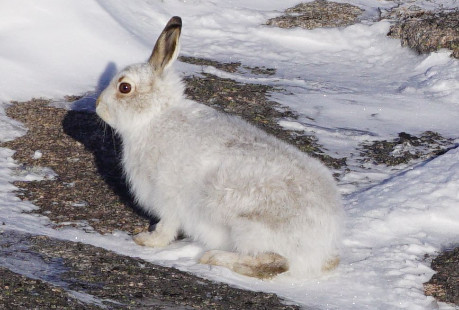Wednesday 15th August 2018, 1:41pm
A row has erupted in the eastern Grampians between ecologists and grouse moor managers over the fate of the Mountain Hare.
A long-term study of Mountain Hare populations from 1943 by respected ecologist Dr Adam Watson indicates that numbers of Mountain Hares have crashed to around 1% of their levels in 1950. This study, published in the Journal of Applied Ecology shows a slow decline in numbers of hares until 1999, after which a steep decline of 30% each year brought numbers overall in the Eastern Grampians to a worryingly low level.
A different tale is told by moorland managers who report very high populations of hares on their grouse moors, with a need for extensive culling. The Scottish Gamekeepers Association says that data held by Game and Wildlife Conservation Trust shows the number of hares taken on grouse moors shows no overall discernible trend since 1954.
This is an astonishing difference of opinion, and many of us who enjoy seeing wildlife on the hill will be interested in understanding the true story behind the headlines.
What’s the problem?
Mountain Hares are subject to annual culls by moorland estate owners who say that hares are carriers of a tick-borne virus that affects grouse chicks – ‘louping ill’. This is mainly a disease of sheep, but it is reported that hares can carry ticks into grouse moors where it can be fatal for grouse chicks.
The hare cull by moorland estates in an attempt to control the virus is estimated at 25,000 animals each year.
Duncan Orr Ewing, Head of Species and Land Management at RSPB Scotland said: “The mountain hare is a keystone native species of the Scottish uplands. This authoritative research suggests that we should be very concerned about its population status in its former strongholds.”
A spokesman for the Scottish Moorland Group said: “This latest research flies in the face of what estate owners and land managers see every day on the ground - that hare populations are very high.”
The Scottish Government has commissioned an independent Grouse Moor Enquiry and although Scottish Natural Heritage has been working with the relevant parties to develop more accurate data on the Mountain Hare population, Mountaineering Scotland believes the national agency should be taking greater leadership on this contentious issue.
In a recent survey of our members, 72% said that that mountain flora and fauna is important to their overall experience of their day in the hills. The report in a serious academic journal that Mountain Hares have declined by 99% since 1950 and the conflicting response from the shooting estates is an issue that requires urgent attention to provide clarity to the public about the future of Mountain Hares in the Scottish Hills.

Photo by Neil Reid.